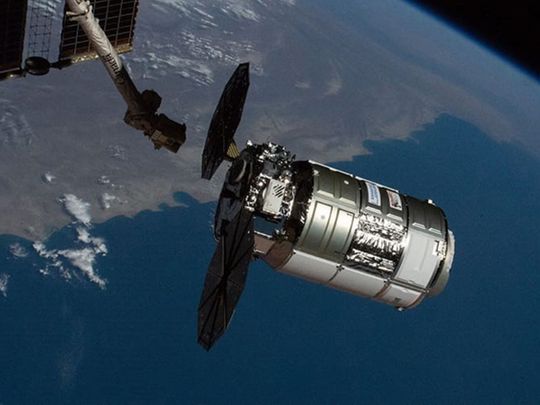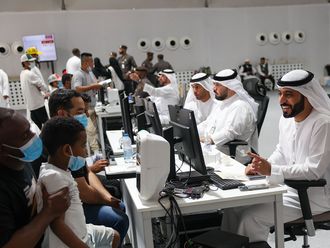
Abu Dhabi: DhabiSat, a cube satellite (CubeSat) made by students at Khalifa University of Science and Technology (KUST), is now orbiting the Earth after leaving the International Space Station (ISS), the Abu Dhabi-based university announced on Tuesday.
According to KUST, the deployment of DhabiSat “marks another milestone event for the UAE”. It is the second CubeSat designed and built by KUST students at Yahsat Space Lab. It will enable students to further design, implement, and test software as well as record data to support future CubeSat missions. KUST’s first CubeSat, MySat-1, was launched in February 2019.
CubeSat is a square-shaped miniature satellite, measuring 10cmx10cmx10cm or roughly the size of a Rubik’s cube, and weighing a little over 1kg. It can be used as a single unit or stacked in multiple units to suit the needs of a specific mission.
Primary mission
DhabiSat, which was created in collaboration with Al Yah Satellite Communications Company (Yahsat), was deployed into orbit from Northrop Grumman’s Cygnus resupply spacecraft.
The primary mission of DhabiSat is to enable students to design, implement and test software modules for attitude determination and control subsystems (ADCS). In terms of system resources, DhabiSat will require less power to achieve the targeted pointings and, if successful, the algorithms will gain flight heritage on board DhabiSat, which then can be used as a baseline for future CubeSat missions.
Consolidating space power
Dr Arif Sultan Al Hammadi, Khalifa University executive vice-president, said: “With the deployment of DhabiSat into its orbital slot, our students and our partners have once again registered another key milestone for Khalifa University and the UAE. We thank our partners Yahsat and Northrop Grumman, who have supported our students throughout the process of designing, developing and launching DhabiSat.”
“As the UAE begins to consolidate its status as a space power in the world, we look forward to creating more scientific talent and human capital, especially in the space science sector, along with our academic and industry partners,” he added.
Muna Almheiri, Yahsat’s chief human capital officer, noted: “(DhabiSat) is a significant step in the UAE’s mission to develop homegrown talent to lead its National Space Programme. We need future generations of Emirati space leaders and visionaries to fulfil the aspirations of our founding fathers, and the rich potential of our nation.”
“DhabiSat’s successful deployment underscores the aptitude, skill and maturity of our youth to manage multi-pronged programmes and work with the leading lights in the global space industry,” Almheiri continued.
Frank DeMauro, vice-president and general manager, tactical space systems, Northrop Grumman, added: “The deployment of DhabiSat and other CubeSats also highlights the versatility and value in our Cygnus resupply vehicle carrying out missions beyond supplying the ISS.”
Meanwhile, MySat-1, the first CubeSat developed by KUST students, was deployed from the NG-10 Cygnus spacecraft in February 2019. CubeSat sent images from space that were received by the satellite ground station at Khalifa University. A new lithium ion battery, manufactured at Khalifa University’s Masdar Institute laboratories, was also tested in space. Students and faculty have so far published several papers based on the data from MySat-1.
Read more
- Sheikh Mohammed tweets about UAE's Hope Probe capturing images of Mars' aurora
- Pakistani female astronaut and UAE resident Namira Salim witnesses Richard Branson’s historic flight
- UAE Hope Probe shares images of Mars’ Discrete Aurora
- Emirates Mars Mission receives prestigious Sir Arthur Clarke Award in London
Inside the cube:
Measuring 10cmx10cmx10cm, CubeSat is roughly just the size of a Rubik’s cube. It weighs a little over 1kg, but is stacked with small science instruments that are used to test new instruments or materials and validate their readiness to be integrated into a more complex space mission.
CubeSats are used to conduct an experiment or take measurements from space. They also provide students with a unique hands-on experience in developing space missions — from designing the satellite to launch and operations.
The concept for CubeSat was developed by professors from California Polytechnic State University and Stanford University in 1999 to provide students with an affordable, hands-on experience in space exploration. In 2003, the world’s first CubeSat was launched and currently there have been over 500 CubeSats launched into space made by students, scientists, and engineers from 50 countries.








